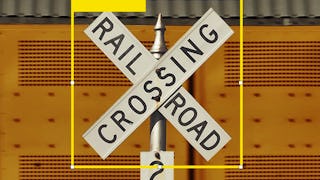Computer vision (CV) is a fascinating field of study that attempts to automate the process of assigning meaning to digital images or videos. In other words, we are helping computers see and understand the world around us! A number of machine learning (ML) algorithms and techniques can be used to accomplish CV tasks, and as ML becomes faster and more efficient, we can deploy these techniques to embedded systems.

Enjoy unlimited growth with a year of Coursera Plus for $199 (regularly $399). Save now.

Computer Vision with Embedded Machine Learning

Instructor: Shawn Hymel
25,414 already enrolled
Included with
(160 reviews)
Recommended experience
What you'll learn
How to train and develop an image classification system using machine learning
How to train and develop an object detection system using machine learning
How to deploy a machine learning model to a microcontroller
Skills you'll gain
- Computer Programming
- Machine Learning
- Artificial Intelligence and Machine Learning (AI/ML)
- Data Ethics
- Python Programming
- Data Preprocessing
- Computer Vision
- Image Analysis
- Model Evaluation
- Applied Machine Learning
- Transfer Learning
- Model Deployment
- Artificial Neural Networks
- Deep Learning
- Embedded Systems
- Convolutional Neural Networks
Details to know

Add to your LinkedIn profile
12 assignments
See how employees at top companies are mastering in-demand skills

There are 3 modules in this course
In this module, we introduce the concept of computer vision and how it can be used to solve problems. We cover how digital images are created and stored on a computer. Next, we review neural networks and demonstrate how they can be used to classify simple images. Finally, we walk you through a project to train an image classifier and deploy it to an embedded system.
What's included
13 videos15 readings4 assignments2 discussion prompts
In this module, we go over the basics of convolutional neural networks (CNNs) and how they can be used to create a more robust image classification model. We look at the internal workings of CNNs (e.g. convolution and pooling) along with some visualization techniques used to see how CNNs make decisions. We introduce the concept of data augmentation to help provide more data to the training process. You will have the opportunity to train your own CNN and deploy it to an embedded system.
What's included
9 videos13 readings5 assignments1 discussion prompt
In this module, we will cover the basics of object detection and how it differs from image classification. We will go over the math involved to measure objection detection performance. After, we will introduce several popular object detection models and demonstrate the process required to train such a model in Edge Impulse. Finally, you will be asked to deploy an object detection model to an embedded system.
What's included
10 videos11 readings3 assignments1 discussion prompt1 plugin
Instructor

Offered by
Explore more from Machine Learning
 Status: Preview
Status: PreviewEdge Impulse
 Status: Preview
Status: Preview Status: Free Trial
Status: Free TrialMathWorks
Why people choose Coursera for their career




Learner reviews
160 reviews
- 5 stars
78.75%
- 4 stars
20%
- 3 stars
1.25%
- 2 stars
0%
- 1 star
0%
Showing 3 of 160
Reviewed on Nov 2, 2022
3rd week was pretty fast and a lot more information can be added in it, i think the course should be 4th week long.still one of the best course to done
Reviewed on Apr 22, 2024
Thanks for helping me to upgrade my konwledge on computer vision and embedded machine learning
Reviewed on Aug 4, 2025
The course breaks down complexities of computer vision into every easy to understand lessons
Frequently asked questions
To access the course materials, assignments and to earn a Certificate, you will need to purchase the Certificate experience when you enroll in a course. You can try a Free Trial instead, or apply for Financial Aid. The course may offer 'Full Course, No Certificate' instead. This option lets you see all course materials, submit required assessments, and get a final grade. This also means that you will not be able to purchase a Certificate experience.
When you purchase a Certificate you get access to all course materials, including graded assignments. Upon completing the course, your electronic Certificate will be added to your Accomplishments page - from there, you can print your Certificate or add it to your LinkedIn profile.
Yes. In select learning programs, you can apply for financial aid or a scholarship if you can’t afford the enrollment fee. If fin aid or scholarship is available for your learning program selection, you’ll find a link to apply on the description page.
More questions
Financial aid available,






